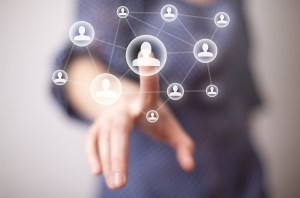Workplace culture is not a mere buzzword that is here today and gone tomorrow, nor is it the latest industry trend that will fade with time. Rather, culture is the very fabric that holds our leadership and our workforce together. Ultimately, our company culture defines who we are, our values, what we believe in, and our core mission. A positive culture develops happier and more engaged employees, which studies show can boost productivity (17 percent), reduce turnover (41 percent), lower absenteeism rates (41 percent), increase sales (20 percent), and improve customer service rates (10 percent). On the other hand, a poor workplace culture can have reverse effects and make a negative impact on the company’s bottom line.
The emergence of a workplace culture is inevitable. It will build itself with or without our help. The only way, however, to create a workplace culture that accurately represents the company’s core values is for leadership to step up and take a prime role in building a positive culture. Here’s a look at six ways leadership can contribute to creating a positive culture.
1. Hold SLT office hours
At Achievers, we hold regular Senior Leadership Team (SLT) office hours to offer an extra layer of transparency and openness to our employees. These company-wide online group chats are available for all employees, both in-office and remote, to participate in. The floor is open for employees to ask SLT any questions they want and the leadership team is available to provide answers on the spot. We also use this time to reinforce the company’s goals, values, and mission.
With our SLT office hours, employees at all levels within our company have an opportunity to ask specific questions that they care most about, whether it’s about the company’s performance or when the next team building event is. This gives every employee a platform to be heard and get real-time responses.
2. Be the example
A recent study shows that poor behavior in the workplace is contagious. A shocking 37 percent of employees admitted that they were more likely to participate in bad behavior if another employee displayed the same poor behaviors. Just one bad employee can wreak havoc in the workplace. This problem intensifies when the toxic employee is a leader.
On the flip side, good behavior also is contagious. The most effective way to build a positive workplace culture is from the top down. At Achievers, I encourage other leaders within the organization to set the example and be role models for the rest of the team. It’s vital that through both communication and actions, our leaders exemplify our company values on a day-to-day basis.
3. Actively listen
Employees who feel like their employer is listening to them are 4.6 times more likely to perform their best at work. Despite this fact, an Achievers’ report revealed 40 percent of employees rate their manager/company just “OK” when it comes to employee feedback.
Leaders cannot assume that their employees feel heard. They must be diligent about encouraging honest feedback from their employees. Using an always-on engagement chat experience, frequent pulse surveys, and single-click polls can provide a great platform for gathering employee feedback.
As CEO and President of Achievers, I (and my leadership team) make it a priority to listen to what employees have to say – both the positive and negative. Collaboration between leadership and the rest of the company is a vital component of building a positive culture and ensuring business success.
4. Take meaningful action
Encouraging frequent employee feedback is not enough. Leadership must take meaningful action based on this feedback. You can collect all the input you want, but if it’s not followed by action, your employees will still feel like their opinion doesn’t matter. In fact, a lackluster response to employee feedback can destroy the company culture.
I understand first-hand the value of having a listening strategy in place to ensure that employees feel heard and that necessary action takes place. Vital parts of this strategy include asking essential follow-up questions and providing employees with updates as to what, if any, additional action will be taken. This strategy can help foster employee engagement and work towards building a stronger positive culture.
5. Make it your priority to build a positive culture
Did you know that 38 percent of employees have “never heard leadership talk about culture” or “they talk about it, but there’s no action.” If your leaders don’t understand the culture, you can’t possibly expect your employees to embrace it. Some of this uncertainty stems from the fact that many employers stray away from definitively defining their unique company culture.
The problem is that without some direction, your leaders may have varying ideas of what the company culture is. This mixed message both among leadership and the workforce can produce an adverse effect. It’s vital that every leader fully understands the company culture, values, goals, and purpose.
6. Frequently recognize great work
When was the last time you recognized your team for a job well done? (December 19, 2019), last week, last month, last quarter, or longer? If it’s been a while, you’re at risk of not just damaging your company culture, but of losing your best employees. Studies reveal that 66 percent of workers (76 percent of millennial workers) claim that they would quit any job if they didn’t feel appreciated.
Don’t make the mistake of undervaluing the power of employee recognition. Your employees want to know they make a difference. They want to know that their work matters. The best way you can show them that you value them as an employee is to provide frequent recognition. Employee recognition can help to solidify your company culture and keep your employees feeling appreciated.
I believe that when leaders take a prominent role in building a positive culture, it can have profound results. It is only when everyone works together and is committed to creating a positive workplace culture that meaningful change can take place. It is then, and only then that companies can reap the benefits of having a strong company culture.
Learn more about how to build a positive culture by downloading our e-book, “Recognition Culture: The MVP of Employee Experience.”
Business & Finance Articles on Business 2 Community
(52)








